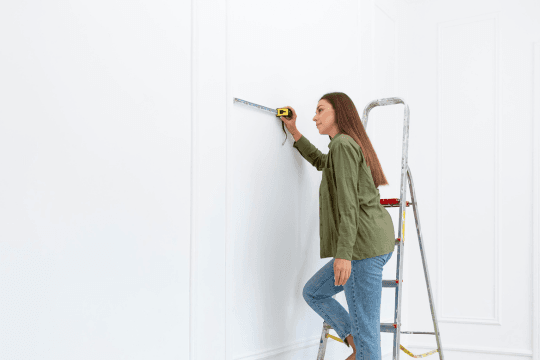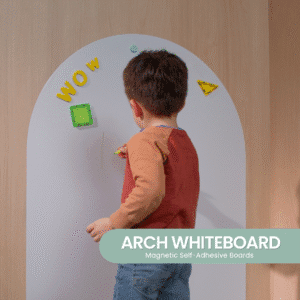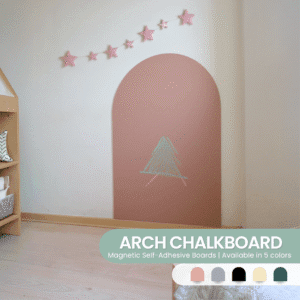How to install your Sticky boards?
Here’s our installation guide
Getting ready to set up your Sticky Board? Check out this quick guide—it’s filled with all the tips and tricks you need for an easy, hassle-free installation. Let’s get your little ones ready to unleash their creativity in no time!
Installation steps

1. Check your surface:
⦁ Make sure the surface is smooth, clean, and dry.
⦁ Works best on walls or drywall with matte paint.
⦁ Wait at least 3 days for freshly painted walls to dry.

2. Special prep for fancy finishes:
⦁ Apply primer on glossy, epoxy, or satin finishes to ensure proper adhesion.
⦁ Smooth out lumps with fine sandpaper. This only affects the aesthetic aspect, not the functionality.

3. Best places to stick it:
⦁ Ideal for walls, glass, MDF, and metal.
⦁ Surfaces must be clean and free of dust or grease.

4. Avoid these spots:
⦁ Don’t install on walls with moisture, peeling paint, or salt residue.
⦁ Repair any damage before installing.

5. Why’ll you love it?:
⦁ Flexible material adapts to curved surfaces.
⦁ Non-toxic and safe for kids, schools, and offices.
Sticky boards time!
Tips for a perfect installation:
Keep it warm
Install in rooms at 59°F or warmer. Use a hair dryer if needed for better adhesion.
Plan ahead
Choose the perfect spot before sticking with the blue tape—the adhesive is strong and not repositionable.
Easy removal
Use WD-40 to safely remove the board without damaging the surface.
Use tape
Use the red double sided tape if you want an extra secure to stick the board on complicated walls.
WARNING!
Surfaces to avoid:
Satin, gloss, or epoxy paint (unless primed).
Painted walls without primer underneath.
Textured wallpaper, fabrics, or edging materials.
Uneven surfaces, gaps, moisture, or poor finishes.
Ceramic tiles or similar surfaces.
Glass with adhesive films (remove them first!).
Removing your Sticky Board
This process ensures minimal impact on your walls while maintaining the surface’s integrity.

1. Apply WD-40 directly to the adhesive and let it sit for several minutes.

2. Gently peel the board as the adhesive loosens.

3. Clean any residue with a microfiber cloth and soapy water.
Does it seem difficult?
Check this video!
We’ll guide you step by step to install your Sticky Board quickly and effortlessly. Follow along to transform any surface into a creative space!



